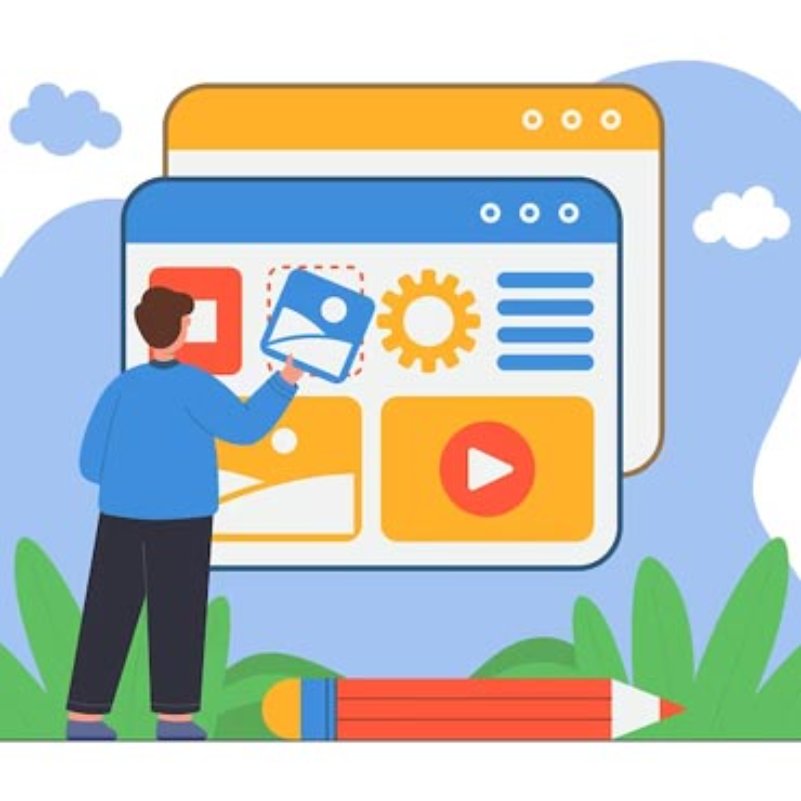Content optimization is the process of making sure that the content on a website or in a marketing campaign is as effective as possible in achieving its goals. This can include improving search engine rankings, increasing conversions, or driving more engaging content.
Why is Content Optimization Necessary?
The main concept of content optimization is to provide content that is optimized for specific keywords that your target audience searches so that it ranks higher in the Google search engine. if the content is not properly optimized. It will not help you rank high in SERPs. Here are some reasons which elaborate why content optimization is necessary.Increase the Chance of Ranking a Website
Search engines use advanced algorithms to determine the authority and relevancy of a website. Optimizing your content can increase your chances of ranking higher in search engine results pages (SERPs).Increase Brand Awareness.
Optimized content is more likely to be shared on social media and linked to other websites, which can increase your visibility and drive more traffic to your site. Well-optimized content can improve user engagement and reduce bounce rates, which can lead to increased conversions and sales.Help Increase The Traffic on the Website
Optimizing your content can make it easier for people to understand the content, leading to more traffic to your website. Indeed, it can also improve the user experience.Ways to Write SEO-Optimized Content
Writing well-optimized content involves several key elements. Here are some tips to help you write content that is optimized for search engines and readers.Conduct Keyword Research
A strategy for optimizing content begins with research on keywords. The goal of keyword research is to find relevant keywords that receive a lot of traffic so that you can write engaging content. First of all, identify the keywords and phrases that people are searching for and then include those keywords in your content naturally and effectively. Use tools like Google Keyword Planner to find keywords related to your topic that have a high search volume and low competition.
Structure Your Content
If the content is presented in an unstructured or inefficient manner, it is likely to be overlooked. By creating attractive and eye-catching headings, you make it easier to read and maintain your readers' interest. For a well-structured article, it's important to add appropriate headings.Write an Attractive Draft
Every great piece of content starts with an outline. Making a draught lets you improve your ideas for writing well-optimized content. And it helps you develop your content's flow. In addition, you can update and revise items without feeling like you're beginning from scratch after completing a project. Writing a draught makes it easy to talk with my editors, designers, etc.On-Page Optimization
This includes things like meta tags, headings, and internal linking, which all help search engines understand the context and relevancy of your content. Headings are the first thing that the reader sees, and they should be attention-grabbing and accurately reflect the content of your article. Use relevant and descriptive titles and descriptions for your pages to help them show up in search engine results.Headings Tags
Creating appealing subtitles will increase the readability of your content. It is important to use subtitles appropriately. The title of a blog post should have only one h1 tag and a keyword that you want to rank for. The main parts should have an H2 tag, and the smaller parts should have an H3 tag. Making different heading tags makes sense. When you use similar tags, users and search engines might think you're giving them the same information twice.Optimize the Meta Description
Google uses the meta description, which is a summary of your content, to show it below your title in search results. To get people to click on your blog post, you need to make it interesting and full of useful information. There is no assurance that your original meta description will display in search engine results. So, the best thing to do is figure out your target keyword and put it in your meta description in a natural way.Write High-Quality User Engaging Content
Start your content with a paragraph that grabs the reader's attention. Use your target keyword at least once in the first 100–150 words to let people know what your content is about. Ensure content is well-written, optimized, and provides authentic information to readers. A paraphrasing tool can assist in this regard. It can help you to write high-quality user engaging content and make it easier for readers and search engines to understand the structure of your content.Search Engine-Friendly URL
You should make sure your URLs are SEO-friendly. URLs give search engines information about the page's content, context, and intended audience. It should be clear, concise, and meaningful, and it should incorporate relevant keywords.Optimized Content
People like to look at pictures, and they often spend as much time looking for pictures as they do for text. So, make sure all of the images in your content are optimized. Add alt tags, which serve as alternative text; utilize image tags, which are the words that appear when a user scrolls over an image; and ensure that the file size of your photos has been properly adjusted to guarantee that all images load and display correctly.Write Small Paragraphs
One thing to remember is to write short paragraphs. It does not imply that each sentence must begin on a new line, but sections should be ordered rationally and have their own distinct thoughts. Use short paragraphs (about 2–3 sentences). Use different options for formatting, like bullet points, highlighting text, and changing the font. This makes it easier for people to read your content on mobile devices and makes your content more engaging.Appropriate Word Count
Too short or too long posts might have an adverse impact on your rankings, but content that is of an appropriate length help to increase site ranking. It's easy to write a 250-word post because it's quick and simple. But this length doesn't give your potential readers the important information they need. If your page isn't helpful, people will go to other sites to find the information they need. The number of words is an important part of SEO.Optimize Videos
Videos, like photographs, catchy headlines, and other visuals or vibrant colors, capture the reader's attention and keep them engaged. If you don't have videos to publish, you can discover high-quality footage that you can integrate into your website. Always utilize good keywords in the title, description, and tags of your videos; distribute them on social media sites.Integrate Both Internal and External Linkages
Internal links assist users and search engines in locating pages on a website. They can boost the ranks of other pages on your website. Link to other related content on your site and reputable sources to provide additional information for your readers and to show search engines the relevance and authority of your content. External links are used to convey to search engines that a page is reliable.Monitor Your Activity
Monitor your SEO-friendly articles by keeping track of your efforts. Google Analytics is a simple and cost-free tool for monitoring page views and average time spent per page. Check things like your bounce rate and how long people stay on your site to get a sense of how people use your site once they find your content. If you see a high bounce rate and a low average time on the page, that means your content wasn't good or wasn't interesting.

